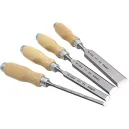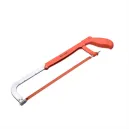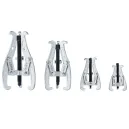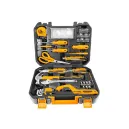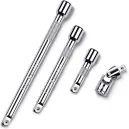Hand tools have been an essential part of human civilization for millennia. From crafting the earliest tools to building modern infrastructure, they remain indispensable. In this article, we delve deep into the world of Purchaser hand tools, exploring their types, uses, maintenance, and more.
Introduction
In the realm of manual labor and DIY projects, Purchaser hand tools reign supreme. These tools, powered by manual force, encompass a vast array of implements designed to make tasks easier, faster, and more precise. Whether you're a professional tradesperson or a casual hobbyist, understanding the nuances of hand tools is crucial for success.
Exploring Purchaser Hand Tools
Understanding the Types of Hand Tools
Hand tools come in various shapes and sizes, each tailored to specific tasks. Let's explore the primary categories:
Cutting Tools
From precision cutters to heavy-duty shears, cutting tools are indispensable in numerous applications.
Knives
Knives serve multifunctional purposes, from intricate carving to heavy-duty slicing.
Saws
Saws come in diverse forms, including handsaws, hacksaws, and specialty saws for specific materials.
Holding and Gripping Tools
Essential for securing materials and achieving precise manipulation, holding and gripping tools are a cornerstone of manual work.
Clamps
Clamps provide temporary fastening, crucial for woodworking, metalworking, and construction projects.
Pliers
Versatile and adaptable, pliers come in various types, including cutting, gripping, and bending variants.
Maintaining Your Hand Tools
To ensure longevity and optimal performance, proper maintenance is paramount. Here are some essential tips:
Regular Cleaning
Removing debris, rust, and contaminants helps prevent corrosion and prolongs tool lifespan.
Lubrication
Applying lubricants to moving parts reduces friction, enhancing functionality and preventing wear.
Storage
Storing hand tools in a dry, well-ventilated area protects them from moisture and damage.
FAQs (Frequently Asked Questions)
How often should I sharpen my knives?
Regular sharpening depends on usage frequency and the type of material being cut. As a general rule, aim for sharpening every few months for moderate usage.
What is the difference between adjustable and fixed wrenches?
Adjustable wrenches feature a movable jaw, allowing for versatile use on various fastener sizes. Fixed wrenches, on the other hand, have a stationary jaw, offering greater stability but less flexibility.
Can I use regular pliers for electrical work?
While regular pliers can be used for basic electrical tasks, insulated pliers are recommended for safety when working with live wires.
How do I choose the right saw for my project?
Consider the material you'll be cutting, the desired precision, and the available workspace. Consult with experts or refer to manufacturer guidelines for specific recommendations.
What are the benefits of using a vise?
A vise provides secure clamping, enabling precise machining, woodworking, and assembly. It enhances safety by immobilizing workpieces during drilling, cutting, or shaping.
Is it necessary to wear safety gloves when using hand tools?
Safety gloves offer protection against cuts, abrasions, and splinters. While not always mandatory, wearing gloves is highly recommended, especially when handling sharp or heavy-duty tools.
Conclusion
Purchaser hand tools represent the epitome of craftsmanship, efficiency, and reliability. By understanding their diverse applications, maintenance requirements, and safety considerations, you can unlock their full potential in your projects. Whether you're a seasoned professional or a novice enthusiast, investing in quality hand tools is a decision you won't regret.
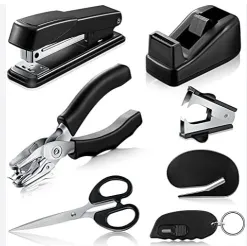

 Login with Google
Login with Google

